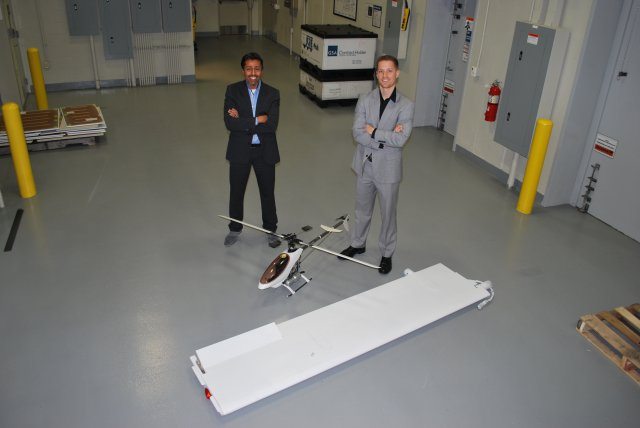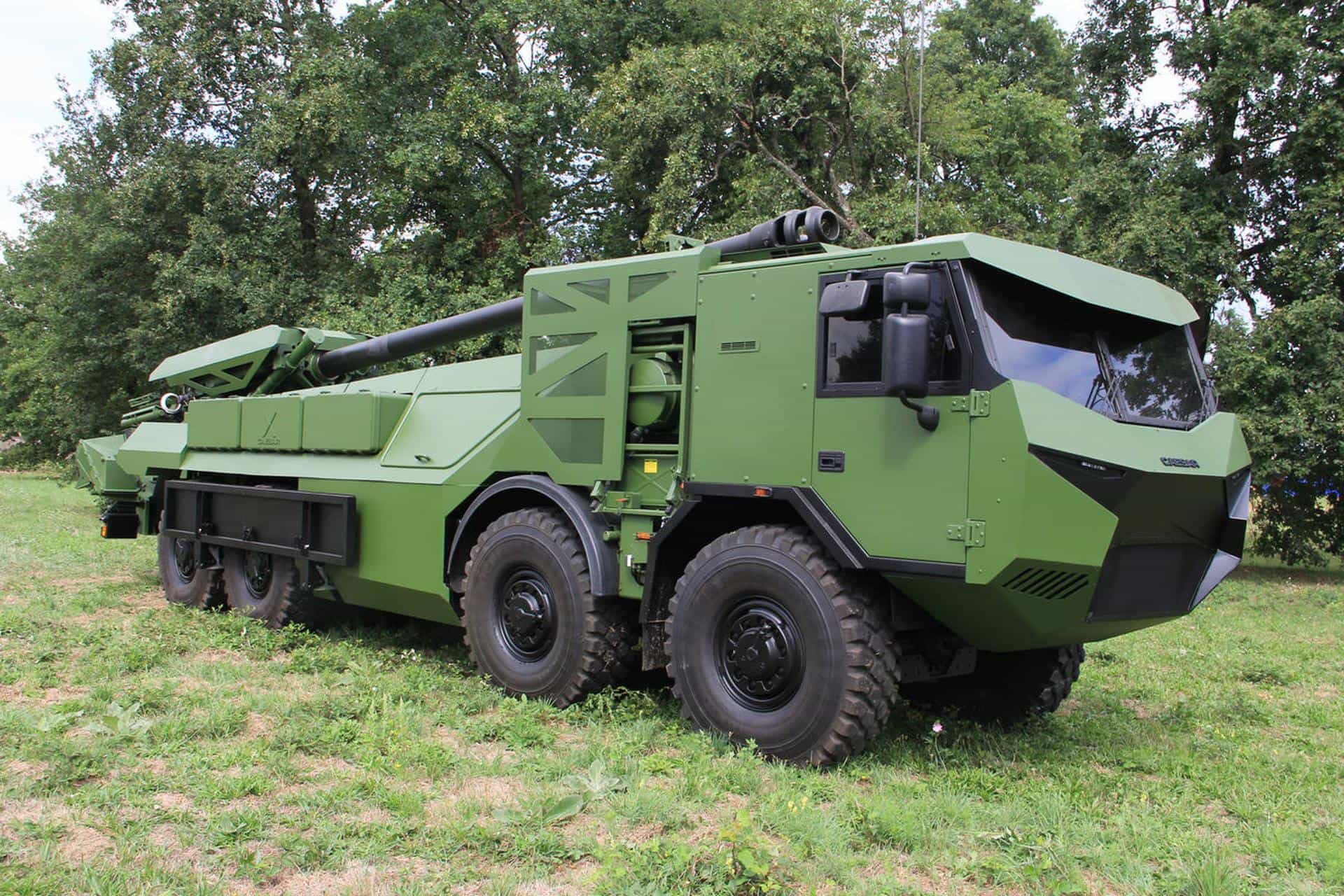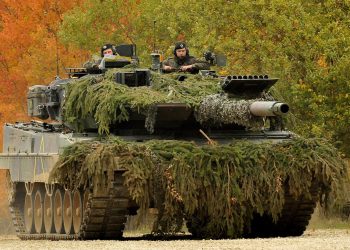Army researchers made an important discovery during metals testing that could impact the way the structural health of current and future military vehicles are deemed “healthy and more efficient.”
The discovery may lead to saving time and money, as well as prolonging the life of critical platforms.
“Military structures operating in such environments respond in a nonlinear matter … they shake intensely, especially in rotorcraft,” said Ed Habtour, a U.S. Army Research Laboratory, or ARL, researcher who specializes in nonlinear structural dynamics. “I was studying ways to simulate the dynamic response of structures exposed to harsh vibration loading seen in the battlefield.”
The objective is to provide operators with economical and novel health-monitoring technologies for the Army-led Future Vertical Lift program, which aims to replace the service’s aging helicopter fleet, and the aircraft of other services, at some point in the future.
The ARL team’s approach uses preventative diagnostics with innovative techniques to evolve current maintenance processes from a manual to an automated approach, Habtour said.
While vibration and nano-mechanical testing on the materials’ structures continues, this discovery would not only affect future Army aircraft, but would also help reduce Department of Defense operational and sustainment costs, and the time it takes for maintenance crews to perform mandatory inspections.
Habtour and Dr. Dan Cole, an ARL materials science researcher, shared their approach to developing the basic science behind damage precursor detection. They are developing novel techniques and methodologies to monitor progression of structural property degradation that can become damage.
Some of the approaches used at the laboratory’s Vehicle Technology Directorate include changes in the microstructure, electrical resistivity, acoustic response, localized thermal response, and materials micro-compliance to extract precursors to fatigue crack formation.
“I was using classical nonlinear dynamic theory to simulate the structural response,” Habtour said. “There was a small drop in the resonance frequency and an increase in the structural softening over time, but conventional sensors such as strain gages were telling us the structure was healthy.”
According to the team, one of the most promising techniques is the materials micro-compliance, which provides explanations to complex mechanical behavior encountered in the field.
Habtour studied the structure’s fatigue using conventional ways (vibration) for more than a year. He said he knew the material was undergoing fatigue, but he could not see any micro-cracks–something was changing in the material. That is when he recruited the expertise of Cole, who used a new and different approach to test the strength of the material.
“Reaching out to Dan helped us to connect the world of systems dynamic to the micromechanics world,” Habtour said. “The outcome was the birth of a powerful technique that utilizes the interplay between the micro-material properties and the nonlinear dynamic parameters. The missing piece in the dynamic model was the fatigue-damage-precursor component that was captured through micromechanics and detected by adding precursor to the nonlinear dynamic model.”
Cole’s research involves the study of the structure of materials down to the micro and nano levels.
“Ed approached me about the shift in the structural resonance and the increase in the structural compliance when the structure is exposed to harsh vibratory loads,” Cole said. “We began discussing the possibility of changes in the state of the material at the micro-level that couldn’t be picked up through conventional mechanical tests. We decided to explore the local properties of the structure in areas that were expected to have experienced relatively high stresses.”
The team used a technique known as instrumented indentation or nano-indentation, which mechanically samples very small volumes of material; indents were performed approximately 100 nanometers into the structure surface.
“We noticed a very clear trend that showed a more compliant response [material softening] near these highly stressed locations,” Cole said. “The indentation elastic modulus dropped by approximately 40 percent with respect the rest of the structure, which was a huge surprise. In fact, we were pretty skeptical at the initial results and ran hundreds of additional tests to confirm this effect.”
Dr. Volker Weiss, an ARL senior research scientist at the directorate and professor emeritus at Syracuse University, found the discovery promising.
“Among several damage and damage-precursor indicators, the structural-stiffness effects observed in this study appear most promising,” Weiss said. “Softening [or compliance] measurement may well become one of the methods of choice for remaining service-life prediction of critical structural components.”
The next step is to better understand the changes in the microstructure that are leading to the compliance effect at the structure’s surface.
“Ultimately, we want to use the local mechanical tests to fully understand the material state before, during, and after loading,” Habtour said. “From there, we want to see if this technique can be applied to more complicated aerospace materials, such as current and future composite materials.”
Dy D. Le, chief of the mechanics division within the laboratory’s directorate, said he expects the discovery will enable the Virtual Risk-informed Agile Sustainment, or VRAMS, concept in future military platforms.
“The ability to identify and capture material-damage precursors is one of the key technologies included in the VRAMS core engine,” Le said. “Once a damage precursor is identified and its characteristics captured, the aircraft’s on-board intelligent system will provide information on how long it may take for a precursor to evolve through various stages of damage and, most importantly, when it may grow to catastrophic failure.”
The VRAMS concept aims at providing self-diagnostics and inspections; multiscale modeling to project the evolution of damage and maneuver capability; and reconfigurable maneuvers to keep the operating stress level at or below the stress-level threshold to avoid fatigue failure of critical aircraft components.
“ARL aims at maturing these technologies to enable VRAMS capability and make it a reality for sustaining Army Future Vertical Lift aircraft in 2048,” Le said.
The envisioned technology powered by the ability to identify and capture material-damage precursors, when integrated into Army and commercial aircraft, may can enable detection of impending failure at a very early stage.
This may result in saving Soldiers and passengers, “but can also be used to sustain Army Future Vertical Lift and commercial aircraft at substantially lower maintenance costs,” Le said.
Army researchers recently submitted a manuscript detailing this research to the journal, Structural Health Monitoring.










